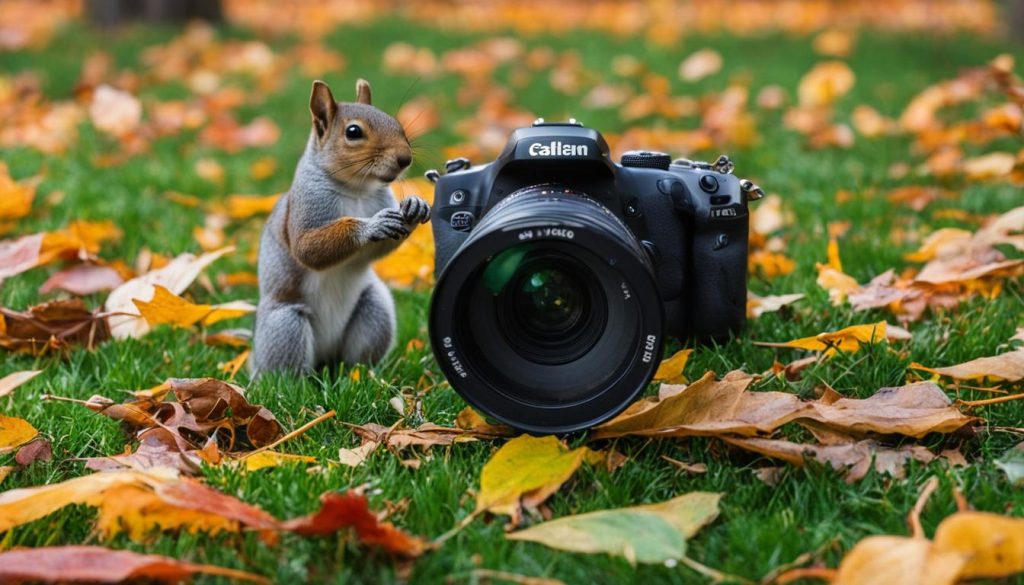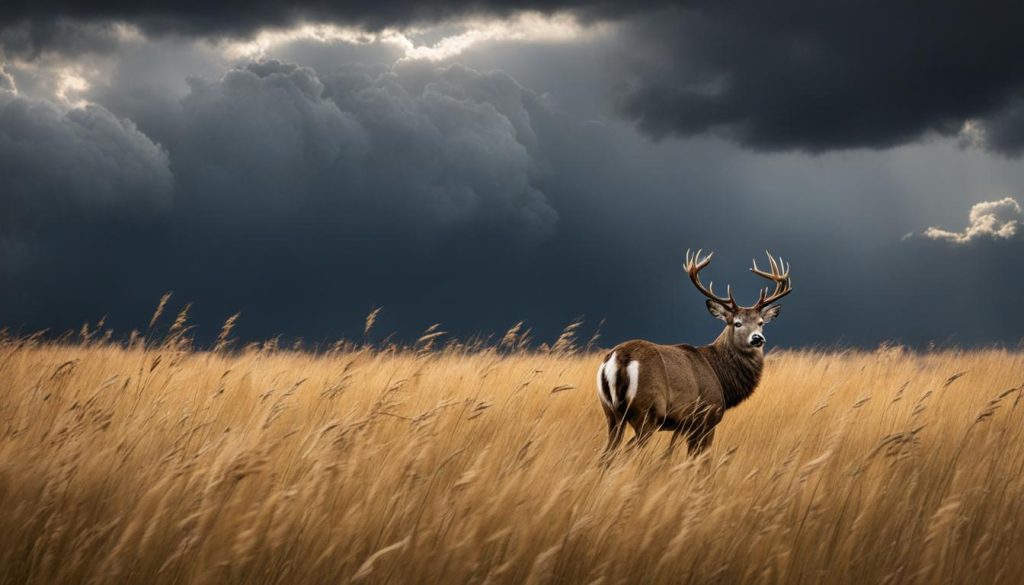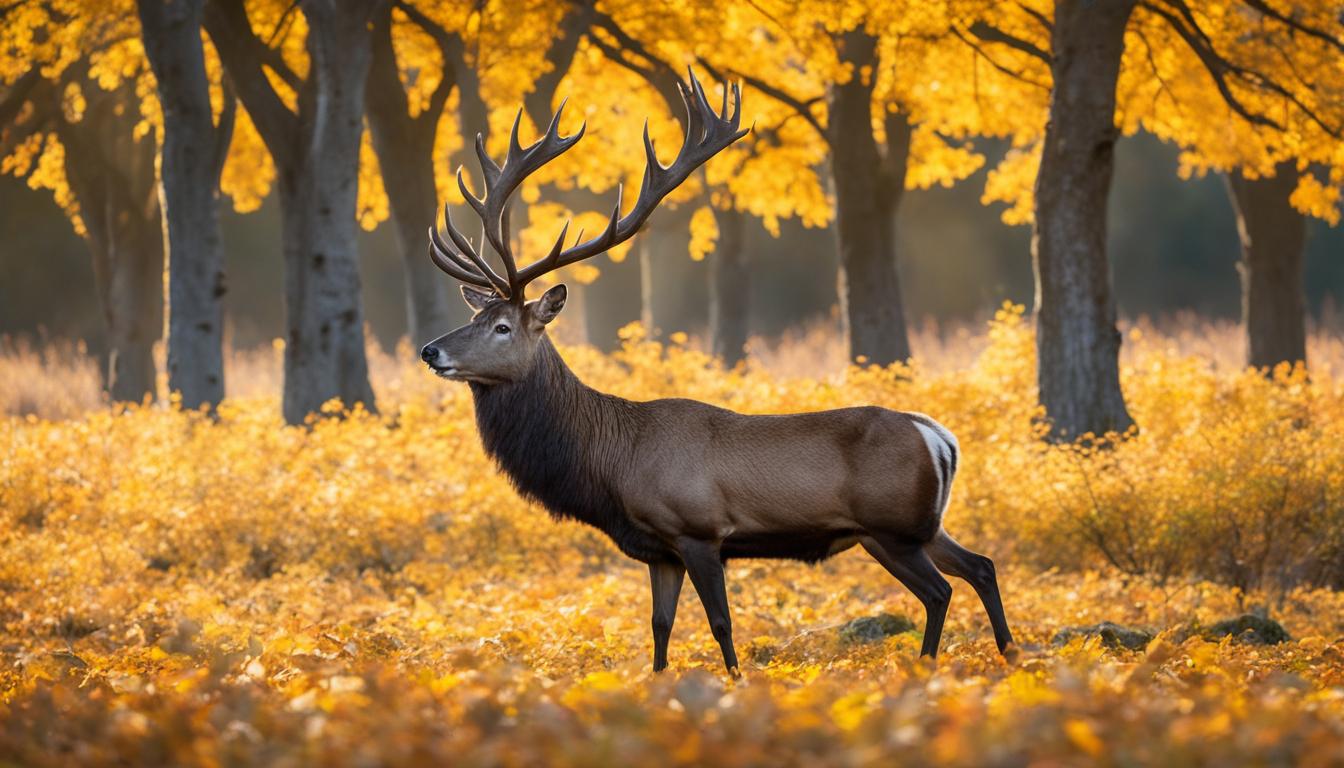Seasonal wildlife photography offers a unique opportunity to capture the changes in nature throughout the year. It involves photographing wildlife during different seasons and documenting their behaviors, habitats, and interactions with the environment. By immersing yourself in the beauty of nature and observing the stunning transformations that occur, you can create mesmerizing images that showcase the magic of the natural world.
Whether it’s the vibrant colors of fall foliage, the snowy landscapes of winter, or the blooming flowers of spring, each season presents its own set of visual delights that can be immortalized through the lens of your camera. Capturing wildlife in different seasons allows you to witness firsthand the adaptability and resilience of these creatures as they navigate the ever-changing environment.
In this article, we will delve into the art of seasonal wildlife photography and provide you with expert tips on how to capture nature’s changes through your photography.
Key Takeaways:
- Seasonal wildlife photography allows you to document the changes in nature throughout the year.
- Each season presents unique opportunities and visual delights.
- Through photography, you can showcase the adaptability and resilience of wildlife species.
- Expert tips will help you capture the magic of seasonal wildlife photography.
- By capturing nature’s changes, you can raise awareness about the importance of conservation.
The Beauty of Wildlife in Different Seasons
Experience the breathtaking transformations of wildlife as the seasons change. Each season unveils a unique spectacle, showcasing nature’s remarkable beauty in a myriad of ways. From the vibrant colors of fall to the snowy landscapes of winter, wildlife adapts and thrives, painting a mesmerizing portrait of seasonal changes. By capturing wildlife in different seasons, photographers have the opportunity to immortalize these extraordinary moments and reveal the astonishing diversity and adaptability of our natural world.
A picture is worth a thousand words, and in the realm of seasonal wildlife photography, it has the power to create a visual narrative that captivates our hearts and minds. Through the lens, we witness the extraordinary journeys of migratory birds as they traverse vast distances, the graceful dance of deer amidst a backdrop of blooming flowers, and the joyful play of otters in a winter wonderland.
Each season presents its own set of wonders, revealing the intricate interconnectedness between wildlife and their environment. Spring breathes new life, with animals reemerging from hibernation, nests bustling with newborn birds, and lush landscapes awash with vibrant hues.
Spring is nature’s way of saying, ‘Let’s party!’
As summer arrives, the world awakens to a symphony of sights and sounds. Hunts take place beneath the scorching sun, insects buzz and flutter around blooming flowers, and coastal shores become a sanctuary for seals, sea lions, and whales.
Summer is a highly anticipated celebration, where nature displays its most vibrant and energetic performance.
Autumn ushers in a burst of enchanting colors, transforming forests into a mesmerizing canvas. Wildlife prepare for the winter months, squirrels busily collecting acorns, and salmon embarking on their extraordinary upstream journey to spawn.
Fall whispers promises of change as it paints nature’s palette with fiery reds, burnt oranges, and golden yellows.
Finally, winter unveils a serene wonderland, blanketed in glistening snow. Wolves howl under the icy moonlight, penguins huddle together for warmth, and Arctic foxes perfectly blend into their snowy surroundings.
Winter mesmerizes with its ethereal beauty, transforming the world into a magical wintry realm.
By immersing ourselves in the beauty of wildlife in different seasons, we gain a deeper understanding and appreciation for the delicate balance of nature. These images serve as a reminder of our responsibility to protect and preserve the habitats that sustain such extraordinary diversity and wonder.
Tips for Successful Seasonal Wildlife Photography
To capture the best images in seasonal wildlife photography, it’s important to be prepared and knowledgeable. Here are some expert tips to help you succeed:
- Research and Plan: Before heading out to photograph wildlife in different seasons, research the behaviors and patterns of the animals you want to capture. This will help you plan your locations and timing for the best chances of success.
- Invest in Quality Equipment: Investing in a good camera and lenses specifically designed for wildlife photography will greatly enhance the quality of your images. Look for equipment that offers fast autofocus, image stabilization, and a long focal length to get up close and personal with your subjects.
- Observe and Learn: Take the time to observe and learn about the animals you are photographing. This will help you anticipate their movements and behaviors, allowing you to capture unique and interesting shots.
- Use Telephoto Lenses: Wildlife photography often requires shooting from a distance to avoid disturbing the animals. A telephoto lens will allow you to capture close-up shots without getting too close, preserving the natural behavior of the wildlife.
- Be Patient and Persistent: Wildlife photography requires patience and perseverance. Be prepared to spend time waiting for the perfect shot and make multiple visits to your chosen locations. The rewards will be worth the effort.
- Consider Lighting Conditions: Pay attention to the lighting conditions when photographing wildlife. The golden hour, which occurs during sunrise and sunset, offers beautiful soft lighting that can add a magical touch to your images.
- Compose with Care: Composition is key in wildlife photography. Consider the rule of thirds, leading lines, and framing techniques to create visually appealing and compelling images.
- Practice Patience and Respect: While photographing wildlife, it’s essential to respect their space and natural behavior. Avoid disturbing them or causing any harm. Remember, you are a guest in their world.
- Never Forget Safety: When photographing wildlife, always prioritize your safety and the safety of the animals. Maintain a safe distance, be aware of your surroundings, and follow any rules or regulations in the area you are photographing.
| Tips for Successful Seasonal Wildlife Photography |
|---|
 |
Capturing Wildlife in Changing Weather Conditions
When it comes to seasonal wildlife photography, adapting to changing weather conditions is key to capturing breathtaking images. Mother Nature’s unpredictability can present both challenges and opportunities for photographers. By embracing the elements and adjusting your techniques accordingly, you can create unique and atmospheric shots that truly showcase the beauty of wildlife in different weather conditions.
Whether it’s rain, snow, or fog, each type of weather brings its own charm and potential for stunning photographs. The raindrops glistening on a bird’s feathers, the ethereal mist enveloping a group of deer, or the contrast of a bright red cardinal against a snowy backdrop – these are just a few examples of the magical moments you can capture when photographing wildlife in changing weather.

Adapting to weather conditions requires careful planning and preparation. Here are some tips to help you make the most out of your photography sessions:
- Research weather patterns: Before heading out, check the weather forecast and plan your photography sessions accordingly. Certain weather conditions may be better suited for specific wildlife species or landscapes.
- Protect your gear: Invest in protective gear such as waterproof camera covers, lens hoods, and microfiber cloths to keep your equipment safe from rain, snow, or dust.
- Use natural light to your advantage: Different weather conditions can create unique lighting situations. Experiment with backlighting, silhouettes, and reflections to add depth and drama to your images.
- Adjust your settings: Be prepared to make adjustments to your camera settings, such as increasing ISO in low light conditions or using a faster shutter speed to capture fast-moving subjects.
“Weather is an integral part of the natural world. Embracing the changing weather not only adds a dynamic element to your photographs but also allows you to capture the resilience and adaptability of wildlife.”
– Patricia Thompson, Wildlife Photographer
By exploring the changing weather conditions and adapting your photography techniques, you’ll be able to capture stunning images that truly convey the essence of wildlife in their natural habitats. So don’t let a little rain or snow deter you – grab your camera, embrace the weather, and create captivating photographs that tell the story of wildlife in changing seasons.
Showcasing the Diversity of Wildlife Through Photography
Seasonal wildlife photography offers a wonderful opportunity to capture the incredible diversity of wildlife species. From migratory birds to hibernating mammals, each season brings a unique array of animals and behaviors to photograph. By documenting the changes in wildlife throughout the year, photographers have the power to raise awareness about the importance of conservation and the need to protect our natural world.
Capturing the beauty and diversity of wildlife through photography allows us to appreciate the intricate ecosystems and delicate balance of nature. Through stunning images, we can showcase the rich tapestry of life that exists in our world, and inspire others to take action in preserving it.
The Magic of Migration
One of the most fascinating aspects of seasonal wildlife photography is capturing the grand spectacle of migration. Witnessing flocks of birds soaring across the sky or herds of wildebeest crossing vast plains is truly awe-inspiring. By photographing these migratory events, we can showcase the immense endurance and determination of these animals as they journey across great distances.
Surviving the Winter
As the seasons change and winter sets in, some animals enter a state of hibernation. This provides a unique opportunity to capture wildlife in a dormant state, highlighting their remarkable adaptations to survive the harsh winter conditions. From squirrels nestled in tree hollows to bears in their snow-covered dens, these images tell the story of resilience and adaptation in the face of adversity.
Flourishing in the Spring
With the arrival of spring, a burst of new life emerges. Flowers bloom, and animals awaken from hibernation or return from migration. Photographing these moments of rebirth and renewal allows us to celebrate the resilience of nature and the interconnectedness of all living beings.
By showcasing the diverse range of species and their remarkable behaviors, seasonal wildlife photography provides a platform to educate and inspire others. It reminds us of the beauty and fragility of our natural world, encouraging us to foster a deeper appreciation and commitment to its preservation.
Conclusion
Seasonal wildlife photography offers a unique and fulfilling way to capture the beauty and changes in nature throughout the year. By following the expert tips provided in this article, you can enhance your skills and create stunning images that showcase the diversity and wonder of wildlife in different seasons.
Through the lens of your camera, you have the power to document the behaviors, habitats, and interactions of wildlife with their environment. Each season brings its own enchantment, from the vibrant colors of fall to the peacefulness of winter landscapes. By embracing the changing weather conditions and adapting your photography techniques, you can capture mesmerizing and atmospheric shots that tell a story.
Seasonal wildlife photography not only allows you to explore the magical world of nature but also raises awareness about the importance of conservation. By documenting the changes in wildlife throughout the year, you can inspire others to appreciate and protect our natural world. So grab your camera and immerse yourself in the wonder of seasonal wildlife photography!
FAQ
What is seasonal wildlife photography?
Seasonal wildlife photography involves photographing wildlife during different seasons to capture the changes in nature, including behaviors, habitats, and interactions with the environment.
Why is seasonal wildlife photography important?
Seasonal wildlife photography allows photographers to showcase the diversity and adaptability of wildlife species, raise awareness about conservation, and document the changes in wildlife throughout the year.
How can weather conditions affect seasonal wildlife photography?
Weather conditions, such as rain, snow, or fog, can create unique and dramatic images in seasonal wildlife photography. By adapting photography techniques and being prepared for different weather conditions, photographers can capture stunning and atmospheric shots of wildlife in their natural habitats.
What opportunities does seasonal wildlife photography offer?
Seasonal wildlife photography offers opportunities to capture unique moments in the lives of wildlife species. From migratory birds to hibernating mammals, each season brings different opportunities to document and showcase the incredible diversity of wildlife.
How can seasonal wildlife photography contribute to conservation efforts?
By documenting the changes in wildlife throughout the year, seasonal wildlife photography helps raise awareness about the importance of conservation and the need to protect our natural world. It showcases the beauty and wonder of wildlife, encouraging people to appreciate and take action to preserve it.






